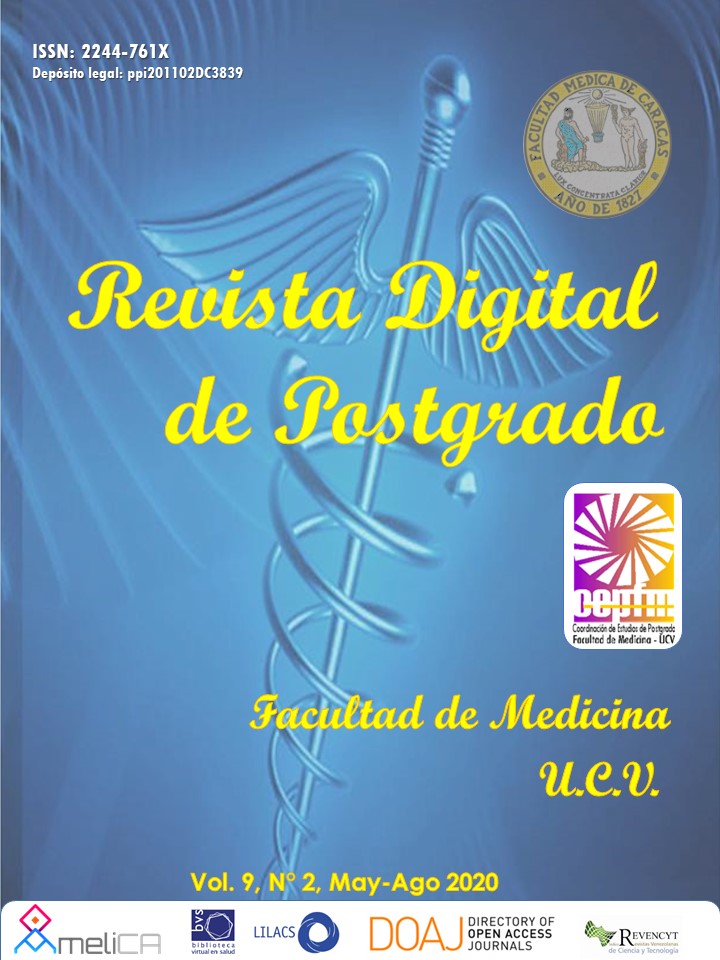Antioxidant capacity of a dark chocolate from organic and unfermented cocoa beans
Keywords:
Total polyphenols, antioxidants, fat, aroma, acidity.Abstract
The proximal chemical composition, the content of total polyphenols, and the antioxidant capacity of a dark chocolate formulated from organic, dry cocoa beans and not subjected to the fermentation process were evaluated. This product was made with inputs and processes developed at the El Cairo Experimental Farm, located at the Universidad Nacional de Colombia (CEF-UN), Arauca, Colombia. The fat content was found between the known ranges (> 50%), being a characteristic linked to the genetic origin, and to the climatic conditions. The high protein content (16.21%) evidenced that it´s unfermented dry cocoa beans. Such content plays an important role in the formation of precursors of flavor and aroma, in fine and exquisite chocolates. The determined pH is indicative of a dark chocolate, with a low fermentation index and low acetic or lactic acidity. The content of total polyphenols is directly related to the high antioxidant activity of this chocolate. It is concluded that the type of genetic material used as input, as well as the processes implemented to obtain chocolate, in CEF-UN, contributed to obtaining a commercial type product, with functional properties, including those related to antioxidant capacity.
Downloads
References
Arvelo M, Delgado T, Maroto S, Rivera J, Higuera I. Navarro A. Estado actual sobre la producción y el comercio del cacao en América. Instituto Interamericano de Cooperación para la Agricultura (IICA). Costa Rica: Representación ICCA;2016.
Alvarado R, Bullard ET. Variation of bean characteristics in hybrid cacao progenies. Proceedings of the American Society for Horticultural Science Caribbean Region. 1983; 5: 105-111.
Perea V, Martínez G, Aranzazu H, Cadena C. Características de calidad del cacao de Colombia. Catálogo de 26 cultivares (1ª ed.). Bucaramanga, Colombia: publicaciones UIS; 2013
Payne M, Hurst J, Miller K, Rank C, Stuart D. Impact of fermentation, drying, roasting and dutch processing on epicatechin and catechin content of cacao beans and cocoa ingredients. J Agric Food Chem. 2010; 58 (19): 10518-10527.
Rodríguez-Campos J, Escalona-Buendia H, Orozco-Avila I, Lugo-Cervantes E. Jaramillo-Flores M. Dynamics of volatile and non-volatile compounds in cocoa (Theobroma cacao L.) during fermentation and drying processes using principal components analysis. Food Research International. 2011; 132(1): 277-288.
Pallares PA, Estupiñán A, Perea M, López L. Impacto de la fermentación y secado sobre el contenido de polifenoles y capacidad antioxidante del clon de cacao CCN-51. Revista ION. 2016 29 (2): 7-21.
Schinella G, Mosca S, Cienfuegos-Jovellanos E, Pasamar MA, Muguerza B, Ramon D. (2010). Antioxidant properties of polyphenol-rich cocoa products industrially processed. Food Research International. 2010; 43(6): 1614-1623.
Valenzuela, A. El chocolate, un placer saludable. Revista Chilena de Nutrición. 2007; 34 (3): 1-20.
Instituto Colombiano de Normas Técnicas y Certificación (ICONTEC). Norma Técnica Colombiana (NTC), 793. Bogotá, Colombia: ICONTEC; 2008.
Torres MM. Influencia de las características y procesado del grano de cacao en la composición físico-química y propiedades sensoriales del chocolate negro. (Tesis para optar el título de Doctor). España: Universitat Rovira I Virgili; 2012. Recuperado de https://dialnet.unirioja.es/servlet/tesis?codigo=102863.
Sánchez A, Naranjo GJ, Córdova V, Ávalos de la Cruz D, Zaldívar J. Caracterización bromatológica de los productos derivados de cacao (Theobroma cacao L.) en la Chontalpa, Tabasco, México. Revista Mexicana de Ciencias Agrícolas. 2016; 14, 2817-2830.
Wollgast J, Anklam E. Polyphenols in chocolate: Is there a contribution to human health? Food Research International. 2000; 33,449-459.
Arauca, Departamentos de Colombia, Geografía, [en línea], 2020 [Consulta 03-06-2020], disponible en: https://encolombia.com/educacion-cultura/geografia/departamentos/arauca/.
Association of Official Analytical Chemists International (AOACI). Official methods of analysis of the AOACI. Washington, USA: K. Helrich; 2011.
Comisión Venezolana de Normas Industriales (COVENIN). Índice de acidez, Nº 325. Caracas, Venezuela: Fondonorma; 1979. Recuperado de: https://goo.gl/7PyxiK.
Tafurt-García G, Jiménez-Vidal L, Calvo-Salamanca AM. Antioxidant capacity and total phenol content of Hyptis spp., P. heptaphyllum, T. panamensis, T. rhoifolia and Ocotea sp. Revista Colombiana de Química. 2015; 44 (2), 28-33.
Martínez, N. Evaluación de componentes físicos, químicos, organolépticos y del rendimiento de clones universales y regionales de cacao (Theobroma cacao L.) en las zonas productoras de Santander, Arauca y Huila. Tesis de Magister en Ciencias Agrarias. Bogotá, Colombia: Universidad Nacional de Colombia; 2016; 107pp.
Ergonul PG, Ergonul B, Seckin AK. Cholesterol content and fatty acid profiles of chocolates mostly consumed in Turkey. Journal of Food Science. 2010; 8(1), 73-78.
Lares M. Diferenciación, caracterización y composición lipídica de la manteca extraída del cacao en dos de los procesos postcosecha. (Tesis doctoral). Caracas, Venezuela: Universidad Central de Venezuela;2007.
Lares M, Gutiérrez R, Pérez E, Álvarez C. Efecto del tostado sobre las propiedades físicas, composición proximal y perfil de ácidos grasos de la manteca de cacao proveniente de la zona de Barlovento, estado Miranda. UDO AGRICOLA.2012; 12(2), 439-446.
Rusconi M, Conti A. Theobroma cacao L., the Food of the Gods: A scientific approach beyond myths and claims. Pharmacological Research. 2010; 61, 5-13.
Visioli F, Bernaert H, Corti R, Ferri C, Heptinstall S, Molinare E, et al. Chocolate, lifestyle, and health. Critical Review in Food Science and Nutrition. 2009; 49, 299-312.
How to Cite
Issue
Section
License
Usted es libre de:
- Compartir — copiar y redistribuir el material en cualquier medio o formato
- Adaptar — remezclar, transformar y construir a partir del material
- para cualquier propósito, incluso comercialmente.
Bajo los siguientes términos:
-
Atribución — Usted debe dar crédito de manera adecuada, brindar un enlace a la licencia, e indicar si se han realizado cambios. Puede hacerlo en cualquier forma razonable, pero no de forma tal que sugiera que usted o su uso tienen el apoyo de la licenciante.
- No hay restricciones adicionales — No puede aplicar términos legales ni medidas tecnológicas que restrinjan legalmente a otras a hacer cualquier uso permitido por la licencia.











